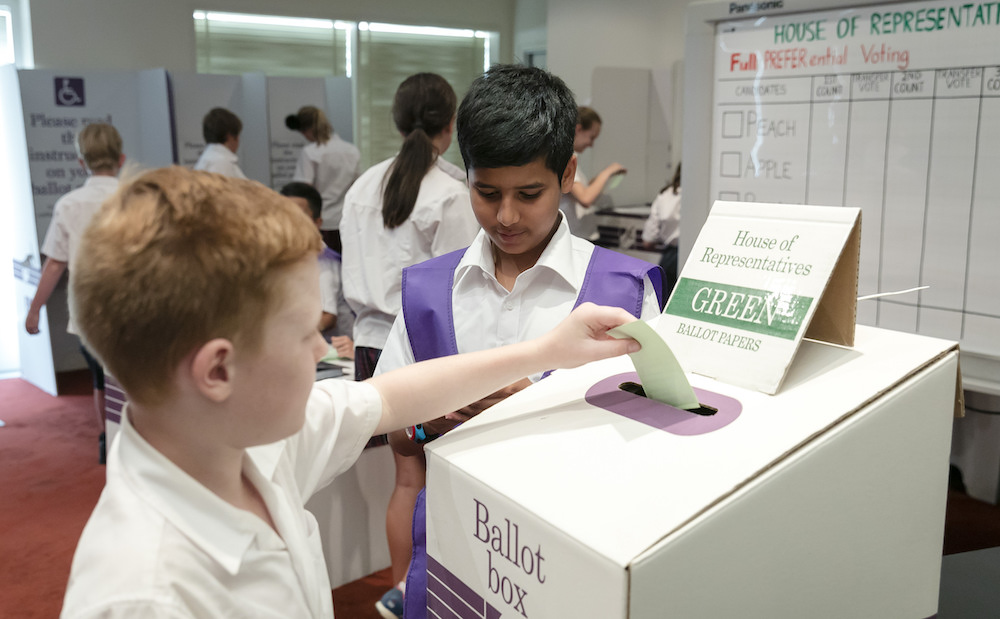
With curriculum planning complete for the start of the academic year, technology and the role it’s expected to play is high on the agenda for educators. Like all industries, the education sector is experiencing rapid change, driven by the impact of new technologies and what’s often referred to as ‘digital disruption’.
Yet, while change is exciting, it seems there are still significant challenges to be addressed, if recent ‘report cards’ are anything to go by.
According to ABC News article ‘Australian schools are in ‘absolute decline globally’, the latest Programme for International Student Assessment (PISA) 2015 findings highlighted gaps within the Australian education system. Dr Sue Thomson from the Australian Council of Education Research collected the Australian data and said local academic performance was in “absolute decline” stating that students’ ability to apply their mathematical and scientific knowledge to real life situations is falling not only relative to other countries but also in an absolute sense. According to another ABC News article titled, ‘Pisa Australia ranks poorly, but what can we learn’, PISA results also suggest that equitable funding of schools, including redistribution to schools serving disadvantaged communities, remains a significant policy issues in Australia.
Polycom also recently undertook its own Education 2025 study within ANZ to gain insights into technology needs within the education sector. Perhaps, not surprisingly, the findings found that educators still see a need for more professional development when it comes to using new technologies. It also found that funding, the curriculum not keeping pace with future workforce needs and the lack of government support, were all seen as inhibitors to creating a more positive education future.
A Guide to the Top 2017 Edu-Tech Trends Expected to Make an Impact
As we know, schools and colleges are under increasing pressure to deliver technology enhanced learning. Here are my thoughts on what technologies we should expect to see more of during the next 12 months:
- Virtual Reality
Delivering deeper engagement than a traditional textbook, virtual reality inside the classroom promotes content rich learning and social interaction. It provides context in learning because the visual element of virtual reality enhances the relationships between concepts and information much better than reading alone. Tools like Google Cardboard are both a platform and a product to experience and encourage interest in virtual reality.
- Augmented Reality
Witness the cult like popularity of Pokémon Go. Augmented reality, which superimposes digital content including hologram images onto a user’s view of what they see is still relatively new. Unlike virtual reality, it allows the user to ‘maintain control’ of their environment by seeing the real world around them. Improvements in the performance and cost of solutions like Microsoft HoloLens (think first generation IPod versus latest IPod) will help drive this technology into the mainstream.
- ‘Learn from Anywhere, Teach from Anywhere’ Mobile Devices
While smart devices like tablets and smartphones are not new in themselves, they continue to gain in popularity as learning tools for students and educators. Offering ‘learn from anywhere’ accessibility, smart devices are also expected to play a significant role in bridging the education inequalities highlighted by PISA. However, the flip side to widespread availability is increased user familiarity and therefore a higher expectation of ‘what can I do’. To drive user adoption, smart devices and supporting apps will need to adapt to this ‘learn from anywhere, teach from anywhere’ mindset.
- Collaboration Technology
The nbn™ aims to have all schools (with priority given to country schools) connected to high speed broadband by 2020. Faster broadband speed will also enable access to ultra-high definition video. When this happens expect enormous changes in the way education is delivered for students, particularly those outside of urban areas. Improvements in equity of access will mean more learning opportunities, including the ability for remote based students to receive the same education as their city based peers. Having access to ultra HD 4k video content inside and outside the classroom is expected to become a popular way for students to engage with content, experts and each other.
- Gamification
Computer games are continuing to reinvent themselves as credible education tools. Popular games like Minecraft are teaching creativity, collaboration and problem solving. Gamification of learning is an educational approach to motivate students, bringing game design and elements into the learning environment. For example, gaming accessories like Osmo convert any iPad into a learning device that enables children to discover and explore a wide range of subjects from mathematics to coding, art instruction to critical thinking.
- Coding
Coding continues to grow in popularity as the curriculum catches up with education innovation. Learning coding skills helps children to develop critical thinking skills and problem solving processes that are not only important in computer science, but also in life. Teaching them how to look at the bigger picture, and to break down big challenges into smaller and more manageable tasks. More emphasis is expected on areas like coding and programming to ensure students understand how to program and interact with technology.
- Evolving Learning Spaces and Styles
Using a mix of cloud, mobile and desktop collaboration apps is already common in technology enabled schools. Tomorrow’s technology needs the flexibility to meet the demands of different learning styles and collaboration requirements ranging from personal and group learning through to idea generation and teacher training. Traditional physical learning spaces will be transformed to accommodate the needs of technology and learning preferences. A video enabled classroom must accommodate the needs of the children physically present in addition to those joining from remote locations.
- The Maker Movement
This refers to the students who will be the creators and inventors of tomorrow. Already they are using technology as tools to bring their innovative concepts and ideas to life. The availability of ‘maker tools’ such as 3D printers and Raspberry Pi motherboards is playing a key role in driving this movement. It allows children to take what they’ve learned at school and test their theories by making prototypes or real-life models of their vision. The maker movement also supports critical thinking during the creation phase – sequence of production actions, workflow and failure! Learning to fail and earning from failing is important to kids.
As the above ‘edu-tech trends’ indicate, the way we learn, teach and collaborate as educational professionals is set to change significantly. I recently spoke with Polycom education partner, Ben Newsome, Managing Director of Fizzics Education. Ben and his team deliver virtual science learning experiences to schools throughout Australia and New Zealand. Here’s a Q&A from that discussion:
- Based on the latest PISA results, do you believe technology has a role to play in helping to address some of the issues raised by the findings including income-inequality?
Technology certainly has a role to play in helping address some of the inequities in access to education. For example, using video collaboration, regional and remote students can participate in live virtual excursions to science centres, galleries and museums without the expense of transport and accommodation inherent to student travel. This extends beyond students too; teachers can connect with leading global educators at conferences in real-time from their own school plus share digital resources during collaborative lessons with isolated classes.
- According to a new report out by the Research Australia Institute and the nbn™ on the ‘future of work’, Australian kids are going to face a radically different work environment from what we see today. What’s your POV view on this?
Educators make an enormous effort in preparing students to communicate, collaborate and think critically. This will extend into the digital environment as access to collaborative technologies increases. Becoming familiar with how to use video and web conferencing systems in everyday lessons is essential for educators to prepare students for the future workplace. Once familiar with the functionality of these systems, teachers can explore a myriad of learning opportunities; for example, creating challenges that require remote teams to solve problems using multiple devices or incorporating live video steams into project-based learning scenarios that simulate real world issues.
- There is a lot of buzz around the cool new technologies expected to turn heads in the edu-tech industry in the coming 12 months. Are there any emerging technologies that you are expecting to see have a significant impact in 2017?
Virtual reality (VR) headsets, augmented reality and immersive spaces will continue to gain popularity amongst students and teachers alike in 2017. The cost of VR headsets, robotics and smart devices will continue to reduce on the back of increased adoption and other technologies such as 3D printing and wearable technology will become more mainstream. The increased emphasis on coding has benefits beyond learning a programming language; through coding students learn to deconstruct complex problems into simpler components and improve their ability to communicate solutions in team environments. The renewed focus on STEM will continue to provide opportunities for schools to engage with their communities via maker spaces and technology fairs.
- Do you think the traditional desk based classroom environment will still be relevant in the classroom of the future?
The traditional desk-based environment is slowly being replaced by more fluid environments with less fixed structures. Classrooms are beginning to emulate the collaborative workspaces found in modern workspaces. Flipped classrooms and BYOD is driving student-centred learning with teachers acting more as facilitators of learning rather disseminators of information. Video enabled classrooms are an essential part of this environment, whereby teachers can produce learning sequences that give opportunities for students to directly interact with subject matter experts from around the globe. Continued adoption of collaborative technologies in schools and utilising these devices in everyday lessons will put young people in a fantastic position to function effectively in modern and future society.
Looking Ahead – 2017 and Beyond
While no one can ever predict the future with absolute accuracy, we can plan for likely outcomes. Assessments like PISA show there are significant challenges to be addressed but as Ben Newsome indicated there are also massive opportunities to embrace the potential of new and emerging technologies within education. There’s no denying that the ability to deliver accessible education for all, that is meaningful and relevant to the future workplace, will be crucial.







